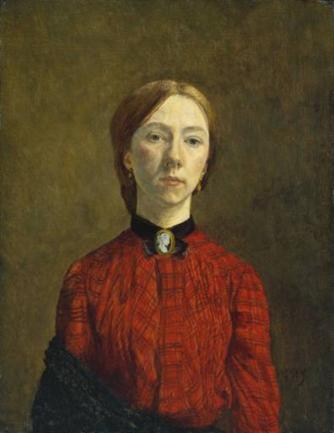Gwen John
There are no products to list.
Gwen John
Gwen John (1876-1939)
Gwendolen Mary John (22 June 1876 – 18 September 1939) was a Welsh artist who worked in France for most of her career. Her paintings, mainly portraits of anonymous female sitters, are rendered in a range of closely related tones. Although she was overshadowed during her lifetime by her brother Augustus John, her reputation has grown steadily since her death.

John's drawings number in the thousands. In addition to studio work, she made many sketches and watercolours of women and children in church. Unlike her oil paintings of solitary women, these sketches frequently depict their subjects from behind, and in groups. She also made many sketches of her cats. Aside from two etchings she drew in 1910, she made no prints.
Her notebooks and letters contain numerous personal formulae for observing nature, painting a portrait, designating colors by a system of numbers, and the like. Their meaning is often obscure, but they reveal John's predilection for order and the lasting influence of Whistler, whose teaching emphasised systematic preparation.
Gwen John's art, in its quietude and its subtle colour relationships, stands in contrast to her brother's far more vivid and assertive work. Though she was once overshadowed by her popular brother, critical opinion now tends to view Gwen as the more talented of the two. Augustus himself had predicted this reversal, saying "In 50 years' time I will be known as the brother of Gwen John."
Throughout her life John was attracted to people of both sexes. As a student she had an affair with fellow artist Ambrose McEvoy. Although August Rodin was her great love, she had a number of same-sex relationships. Whilst at Slade she developed a passion for an unnamed woman which her brother Augustus describes in his autobiography Chiaroscuro and whilst walking to Paris with Dorelia, she developed a passion for a married girl, who then followed them to Paris. Rodin, who had a sexual relationship with his assistant Hilda Flodin, drew erotic drawings of Flodin and John together. The German painter Ida Gerhardifell in love with John but it was not reciprocated. John’s last passion was Véra Oumançoff, for whom she developed an obsession, much to the discomfort of Véra.
John's pictures are held in many public collections. Some of the best examples are in the National Museum Cardiff and in Tate Britain, London.
Still Lives, by Candida Cave, is a three-woman play about Gwen, Ida (Augustus John's wife) and Dorelia (Augustus John's mistress).
An art mystery novel The Gwen John Sculpture, by John Malcolm, features her stay in Meudon, France and her relationship with Rodin.
An S4C documentary presented by Ffion Hague about Gwen John's life included filming of the unveiling of a memorial plaque to the artist in Dieppe's Janval Cemetery in 2015.


